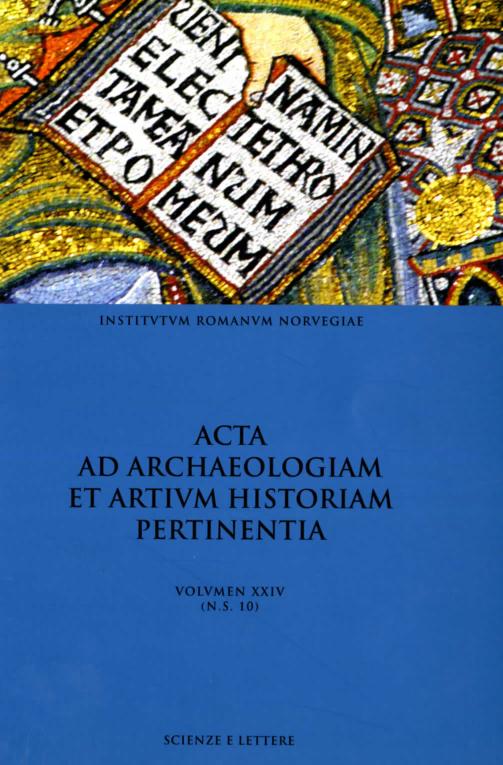Incense in the space between Heaven and Earth – the inscriptions and images on the Gozbert Censer in the cathedral trasury of Trier
DOI:
https://doi.org/10.5617/acta.5783Abstract
The Gozbert Censer in the Cathedral Treasury of Trier, made in Cologne towards the end of the twelfth century, is one of the most conceptually rich medieval works ever cast in bronze. This article offers a close reading of the micro-architecture of the censer and its numerous inscriptions. The miniature building comprises topical elements relative to the representation of the Heavenly Jerusalem, including cosmological allusions. The architecture, built on a cruciform ground plan, is crowded with Old Testament characters and scenes presaging the coming of the Messiah and prefiguring the Eucharist. The chain holder shows Christ sitting on a throne; thus, this functional part of the vessel becomes the ultimate summit of the composition. The censer’s inscriptions in leonine hexameters refer to and interpret the figural representations. They thereby link the different pictorial levels of the complex organism, while creating their own spatial and temporal relationship between the Old and the New Testament, as well as within the miniature architecture, which is in itself a symbolical space. The inscription on the lowest rim of the censer invokes the onlookers' prayers for the eternal life of the donor, Gozbertus, and epitomises the function of the liturgical vessel: incense rising as prayer before the Deity – within the liturgical space of the liturgy, as well as inside the church building.How to Cite
Westermann-Angerhausen, H. (2017) “Incense in the space between Heaven and Earth – the inscriptions and images on the Gozbert Censer in the cathedral trasury of Trier”, Acta ad archaeologiam et artium historiam pertinentia, 24(10 N.S.), pp. 227–242. doi: 10.5617/acta.5783.
Issue
Section
Articles
License

This work is licensed under a Creative Commons Attribution-NonCommercial 4.0 International License.
Authors who publish with this journal agree to the following terms:
- Authors retain copyright and grant the journal right of first publication with the work simultaneously licensed under a Creative Commons Attribution License that allows others to share the work with an acknowledgment of the work's authorship and initial publication in this journal.
- Authors are able to enter into separate, additional contractual arrangements for the non-exclusive distribution of the journal's published version of the work (e.g., post it to an institutional repository or publish it in a book), with an acknowledgement of its initial publication in this journal.
- Authors are permitted and encouraged to post their work online (e.g., in institutional repositories or on their website) prior to and during the submission process, as it can lead to productive exchanges, as well as earlier and greater citation of published work (See The Effect of Open Access).





